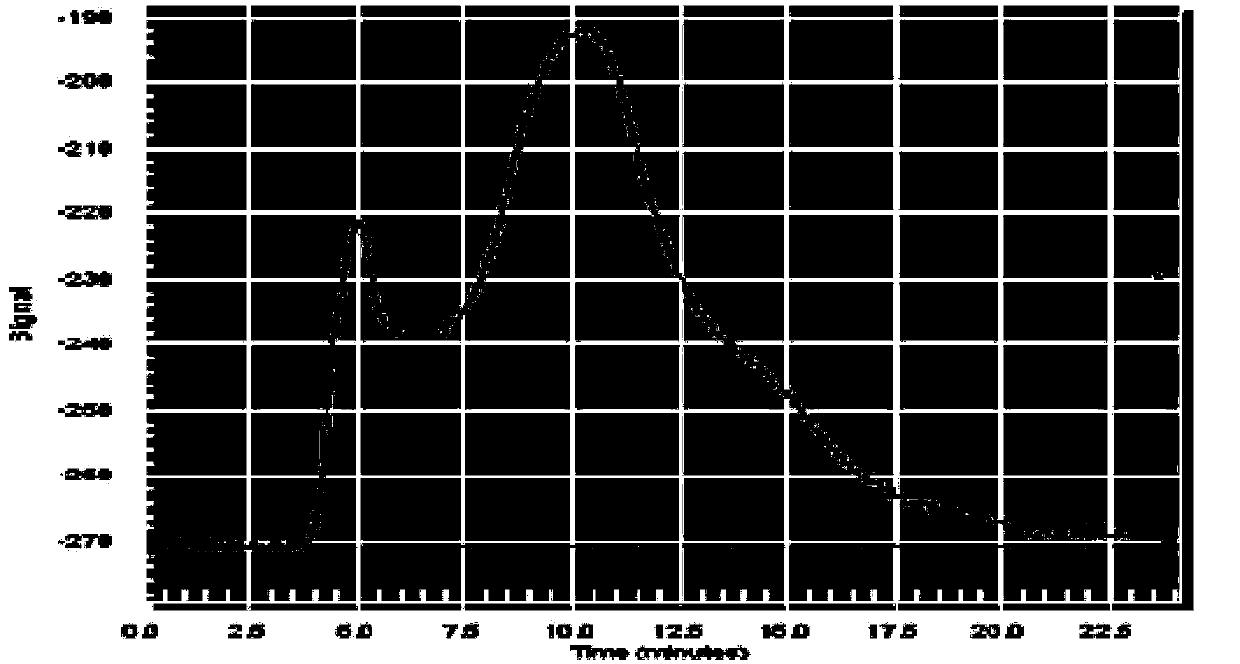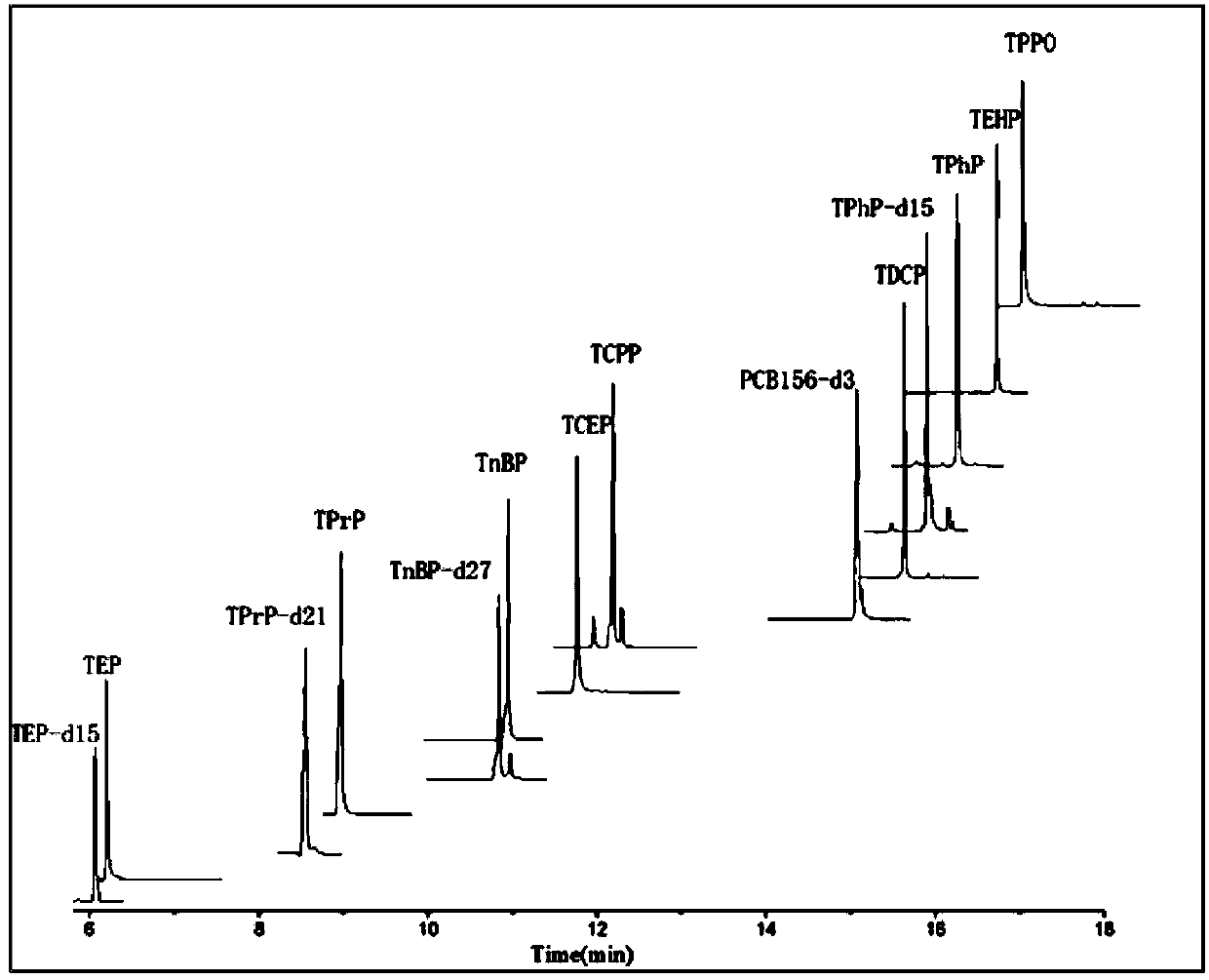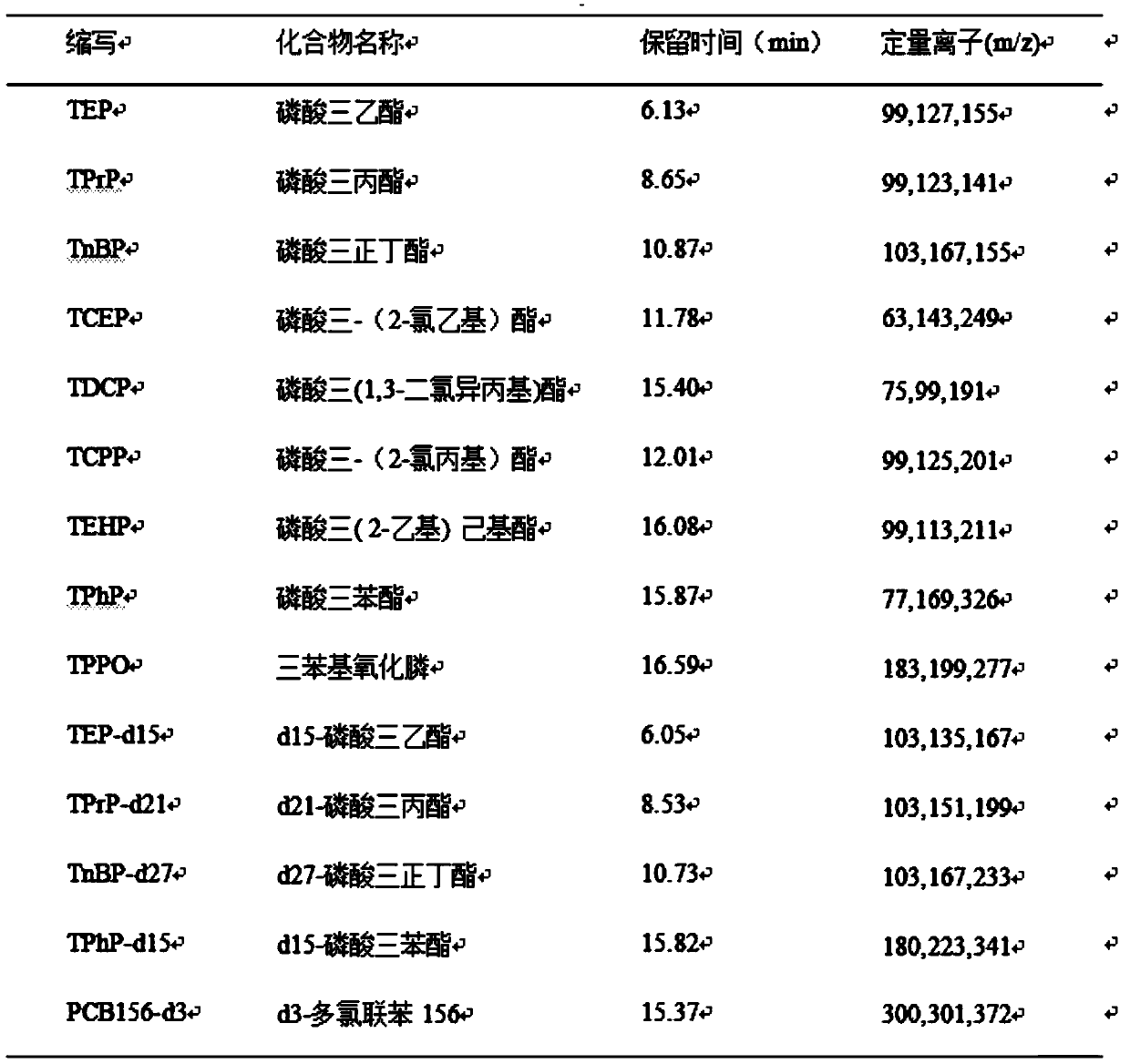Method for synchronously detecting plurality of organophosphorus fire retardants in bottom mud
A simultaneous detection and organophosphorus technology, applied in measuring devices, instruments, scientific instruments, etc., can solve the problems of poor detection effect of organophosphorus flame retardants, and achieve the effect of high degree of automation, good reproducibility, and sensitive quantitative detection.
- Summary
- Abstract
- Description
- Claims
- Application Information
AI Technical Summary
Problems solved by technology
Method used
Image
Examples
Embodiment 1
[0036] This embodiment focuses on analyzing the optimization of the GC-MS method for the determination of organophosphorus flame retardants in standard solutions.
[0037] Step 1, preparation of standard samples: prepare a mixed standard solution with a gradient of 5-500ng / L. Specifically, take a certain amount of organophosphorus flame retardant mixed standard stock solution and internal standard recovery mixed stock solution with a pipette gun and place them in the sample injection vial, then add 240ng of internal standard PCB156-d3, and dilute with ethyl acetate to 1 mL to obtain a standard solution of the corresponding concentration.
[0038]Step 2: Perform GC-MS detection on the above-mentioned mixed standard solution of each concentration, set the chromatographic conditions as follows: flow rate 1mL / min; inlet temperature 250°C, sample volume 1μL, pulse splitless injection; chromatographic column initial temperature 50 ℃, after keeping for 1min, the temperature was prog...
Embodiment 2
[0045] EXAMPLE 2 OPFRs spiked recovery experiment in sediment samples
[0046] Step 1: Take 6 parts of 5g freeze-dried and sieved sediment samples, add 100ng of OPFRs mixed standard stock solution to 5 parts, and add 100ng of four recovery indicator internal standard mixed stock solutions. In the other part, only the recovery indicator internal standard mixed stock solution was added, as a control blank.
[0047] Step 2: Put 6 samples into the ASE extraction cell, use ethyl acetate as the extraction solvent, heat for 5 minutes at 1500 psi pressure, 90°C extraction temperature, and statically extract for 5 minutes, cycle twice, use 60% of the volume of the extraction cell % solvent to flush the extraction cell, and finally purged with nitrogen for 110s. After the extraction, the extract (about 60 mL) was collected and evaporated to 1 mL by rotary evaporation, then a mixed solvent of ethyl acetate:cyclohexane (1:1, v / v) was added, and the volume was adjusted to a 10 mL GPC vial...
Embodiment 3
[0052] Example 3 Sampling Analysis and Detection of Organophosphorus Flame Retardant in Taihu Lake Bottom Mud
[0053] Step 1: Sample collection and processing. When sampling, use a grab-type mud extractor to collect surface sediment and immediately freeze it for storage. After being transported back to the laboratory, it was frozen in a -20°C refrigerator, freeze-dried with a freeze dryer, ground with a mortar, passed through a 100-mesh metal sieve, and stored at -20°C for analysis.
[0054] Step 2: Take 5g of sediment samples at each point, and perform pretreatment on the samples according to the sample pretreatment method in Step 2 to Step 4 in Example 2.
[0055] Step 3: The processed sample solution is subjected to qualitative and quantitative detection by GC-MS according to Step 5 in Example 2. The concentrations of OPFRs at the five sites measured are shown in Table 3.
[0056] Concentration of OPFRs in Taihu Lake sediments sampled at 35 points
[0057]
[0058] N...
PUM
 Login to View More
Login to View More Abstract
Description
Claims
Application Information
 Login to View More
Login to View More - R&D
- Intellectual Property
- Life Sciences
- Materials
- Tech Scout
- Unparalleled Data Quality
- Higher Quality Content
- 60% Fewer Hallucinations
Browse by: Latest US Patents, China's latest patents, Technical Efficacy Thesaurus, Application Domain, Technology Topic, Popular Technical Reports.
© 2025 PatSnap. All rights reserved.Legal|Privacy policy|Modern Slavery Act Transparency Statement|Sitemap|About US| Contact US: help@patsnap.com



